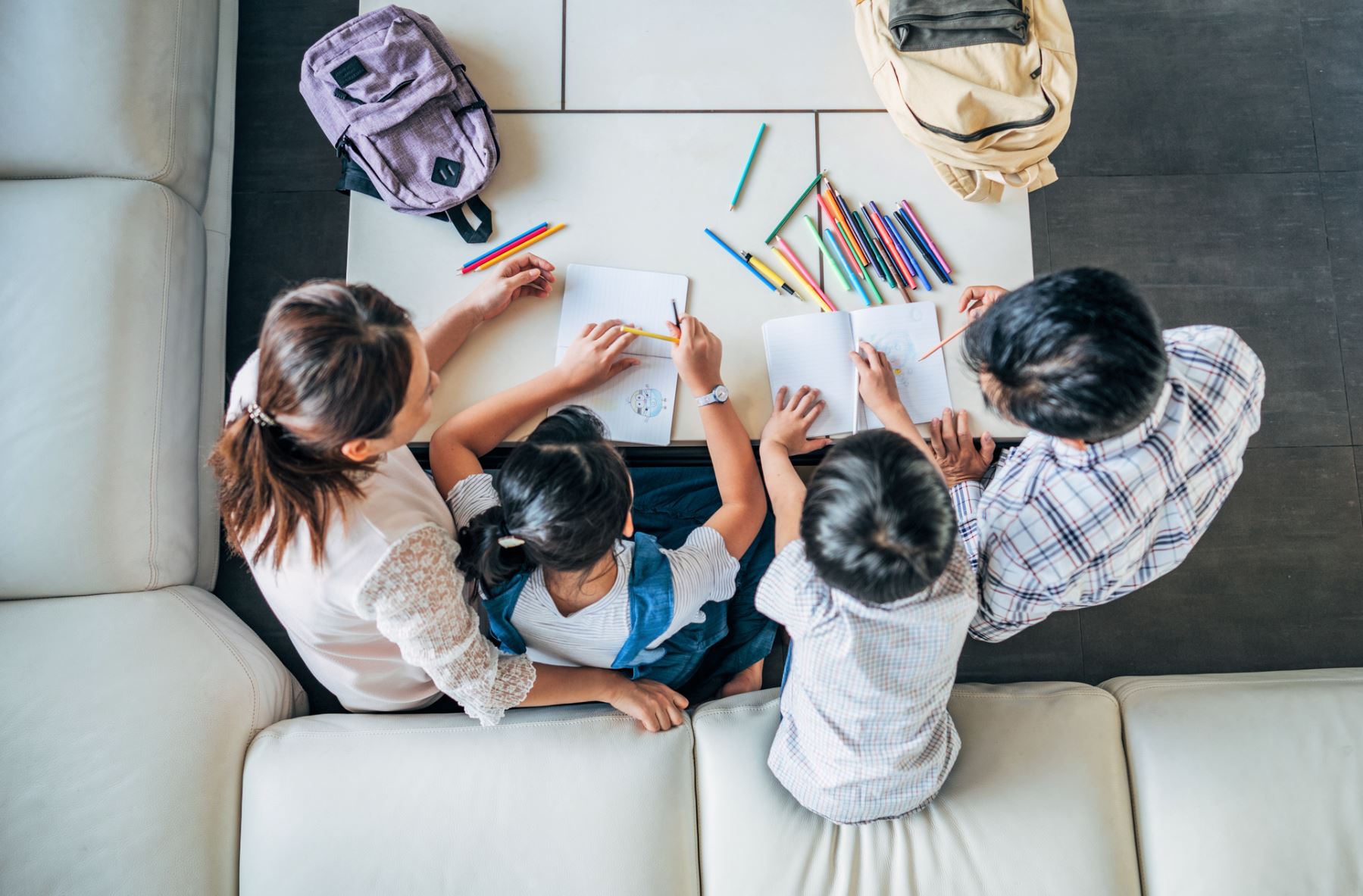
Learning at home during the pandemic is an ideal time for children’s natural interests to flourish, says Flinders University mindfulness and wellbeing researcher Dr Leigh Burrows.
“Parents may think home education should resemble what they did at school, when in fact it can be a chance to connect with children and follow their interests,” she says.
“Their learning doesn’t have to be done in a teacherly, didactic way. It can follow children’s natural interests, for example, they might ask why a bee goes to flowers, and you can follow that experience by looking it up together, writing about it, or drawing a picture.”
Dr Burrows is eager to assure parents that a day of home education doesn’t have to be structured to the hour.
She recommends a morning of semi-structured learning and a more open afternoon.
“You can have the morning structured but very connected to the current scene. The nature of the weather, the flowers, insects, birds, trees. These are all learning opportunities for young children.
“Schools these days have gardens they use for cooking, art, games outside. Learning and wellbeing can be very holistic. You can have the experience first and reflect on it afterwards.
“If the parents can provide experiences, the children can write about it or draw a picture and they are bringing the experience back into themselves.”
These kinds of learning processes can be collaborative, and parents can learn alongside their children.
Dr Burrows points out that all adults have different strengths and know different things that they can use in home education.
“It might be cooking, measuring out the sugar and flour and the different temperatures. That’s a learning opportunity. Or going outside or in the shed or the park instead of being stuck inside together.”
In a time when both parents and students are facing new and confusing ways of living their daily lives, Dr Burrows encourages taking a mindful approach to learning, slowing down and observing the world.
“These actions are very grounding. As soon as we tune in to what’s outside us, we don’t think as much. It’s a form of external mindfulness. Setting a task of each day noticing something new, the weather, differences between morning and afternoon.”
Dr Burrows wants parents to know that while a day of learning shouldn’t be all discipline and rules, there should be some structure that children can come to expect.
She suggests an active task followed by something quiet and reflective, a process she describes as “breathing in and out”.
“It’s about not having too much structure and discipline, but having some. Hold them too tight and everyone will get stressed. They won’t want to do the activity anymore.
“Parents have their other chores or are working from home, and they don’t need to give up the whole day. It’s more about getting into a routine of being home together but not always doing the same thing.”
Learning from home is one thing, but children also need a social outlet, which could be harder to come by with school closures and public restrictions. Dr Burrows acknowledges this, but sees these new circumstances as an opportunity to develop and deepen existing family relationships.
“Kids often want to spend more quality time with their parents, especially young children, and their parents are often too busy. It’s a good opportunity to have the parents present.
“Families who take a couple of months off school and go on holiday often say they’ve found a deeper place with their relationships. It’s an opportunity.”
As an expert in mindfulness, Dr Burrows is well aware of how modern, fast-paced living can distract us from our own personal experiences and the things that matter to us.
She is optimistic that with some of these pressures removed, parents and their children may be able to find new ways of connecting.
“This can be about coming back to our own resources a bit more. Kids can be part of projects at home, which is a different kind of learning.
“It really fits with a lot of slow schooling thought, slow food, there are whole strands of mindfulness all about slowing down and being more one with your environment. Knowing when things are in season, apples in autumn. We’ve become very abstracted from the reality of living an embodied life.”
With mindfulness increasingly recognised as a powerful antidote to anxiety, taking this approach to children’s home education could see benefits in an uncertain time.
“You can get into quite a rhythm with it,” Dr Burrows says. “And those who do will find going back to school quite a shock.”
Article courtesy the Media Centre for Education Research Australia (MCERA) based at Flinders University

